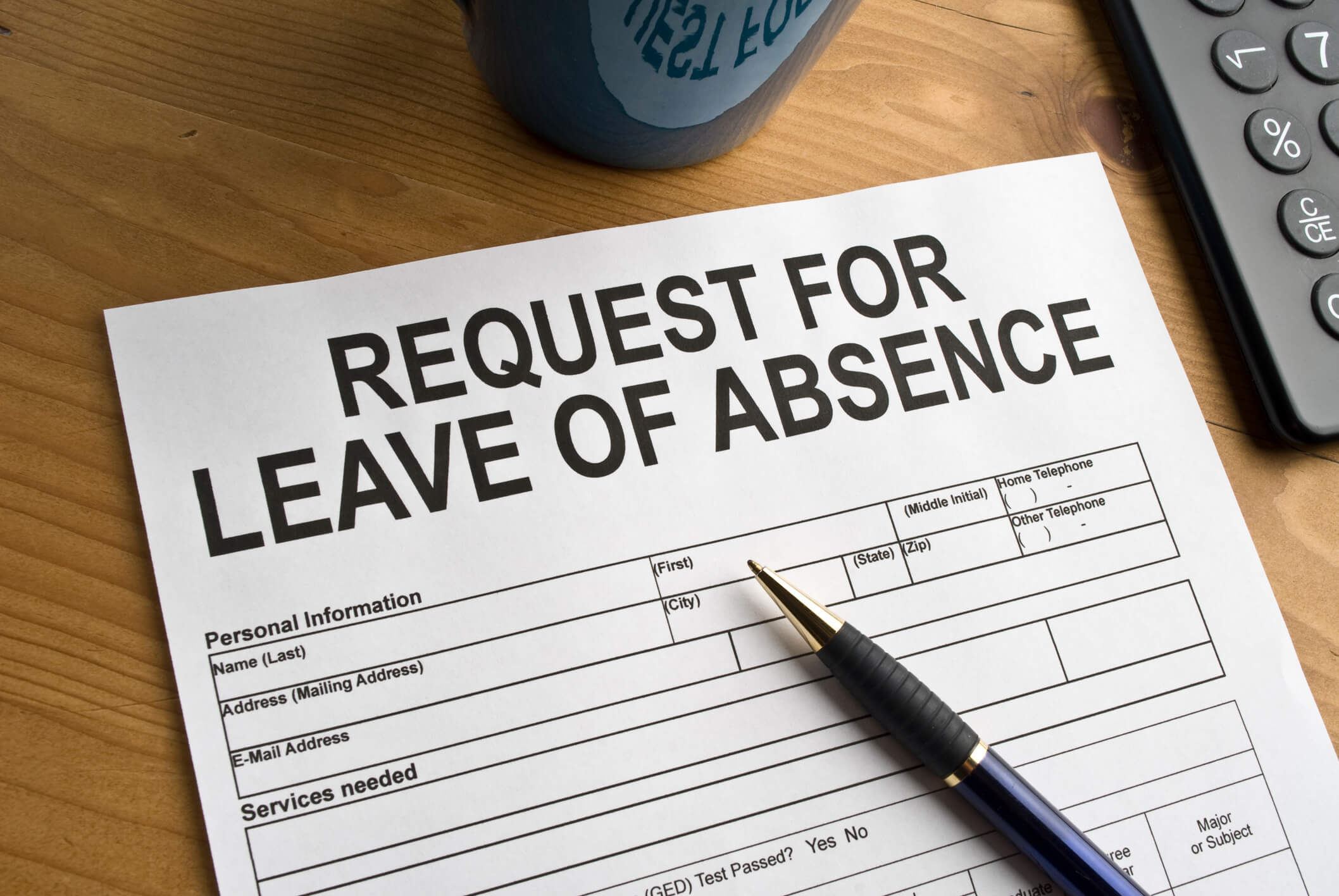Quick Hits
- Starting no later than January 3, 2028, the FAMLI program will provide most Maryland employees up to twelve weeks of paid leave for certain family and medical reasons, with a possible additional twelve weeks for parental bonding, per benefit year.
- After several legislative delays to the program’s effective date, the MDOL has now reissued proposed regulations to implement the FAMLI program.
- The proposed Claims chapter offers additional key definitions, recognizes qualifying events, identifies required documentation, sets deadlines, calculates duration and amounts of benefits, mandates notices to employees and employers, coordinates FAMLI with other benefits, and addresses overpayments and fraud (albeit briefly).
Background on the Law and the Proposed Regulations
In 2022, the Maryland General Assembly enacted the state’s Family and Medical Leave Insurance (FAMLI) program. The program is designed to provide most Maryland employees with up to twenty-four weeks of partial wage replacement within a twelve-month period—consisting of up to twelve weeks of paid family and medical leave, with the potential for an additional twelve weeks of parental leave. We detailed the requirements of the law in our article, Maryland’s FAMLI Program, Part I: An Overview of the Law.
Following several legislatively mandated delays, including during the most recent session, employer and employee contributions to finance the program are slated to begin on January 1, 2027, with benefits commencing no later than January 3, 2028.
We analyzed the MDOL’s prior version of its proposed regulations on the claims process in our article, Maryland’s FAMLI Program, Part III: Claims and Dispute Resolution. While the current proposal aligns closely with the earlier version, several meaningful updates warrant attention.
Key Definitions and Qualifying Events
The proposed regulations generally reiterate several important definitions, including the following:
- “Alternative FAMLI purpose leave” (AFPL) means employer-provided leave intended for the same reasons as FAMLI (e.g., medical leave, family leave, qualifying exigency leave) and now also includes leave under a disability policy.
- “General purpose leave” means other employer-provided leave (e.g., paid time off, vacation, personal leave, or sick leave).
- “Fraud” means a misrepresentation or concealment of a material fact that results in benefits paid to a claimant not qualified for such payment.
- “Complete claim application” means an application with all required supporting documentation, including the employer’s response and any investigation.
- “Good cause” for late filing is narrowly defined to cover unanticipated incapacity due to a serious health condition, documented inability to access filing systems, or demonstrated failure of the employer to provide notice.
Events that qualify for FAMLI benefits are essentially the same as those for the federal Family and Medical Leave Act: the employee’s own serious health condition; a family member’s serious health condition (although the definition of a family member is much broader under state law than the FMLA); parental bonding following the birth, adoption, or foster placement of a child; caring for an injured or ill military service member who is next of kin; and qualifying exigencies arising from the deployment of a service member who is the employee’s family member.
Applications, Supporting Documentation, and Claim Updates
The proposed rules would allow eligible employees to file an application for benefits up to sixty days before and sixty days after taking leave that qualifies for FAMLI benefits. This deadline may be waived for good cause up to one year from the commencement of the leave. The proposed regulations detail the information required to support an application, including proof of relationship for bonding and caregiving, as well as certifications or other documentation for the above-listed qualifying events. A new proposed documentation requirement involves establishing the service member’s status as a member or veteran of the uniformed services. The MDOL’s FAMLI Division may require attestations as to the truth of the application and that there are no disqualifying criteria.
Employers would have five business days to respond to a notice of a claim. In the absence of a timely response, the application would be deemed complete; if eligibility is challenged, the FAMLI Division or EPIP would investigate, after which the claim would be treated as complete. Newly added, the FAMLI Division could also request supplemental employer data. In such a case, if benefits were retroactively approved and the supplemental data were disqualifying, any benefits provided would be considered an overpayment, and job and anti-retaliation protections would not apply.
Notably, if benefits are approved and an employer submits disqualifying information after the five-day window, the employee would be allowed to retain any benefits received, but further benefits would cease. Job and anti-retaliation protections would continue to apply until benefits are revoked, however.
Employees would be required to update material information within ten days or as soon as practicable if there is good cause, including changes to the basis, dates, duration, or receipt of workers’ compensation or unemployment insurance benefits. Failure to update could result in a delay, overpayment, underpayment, or denial of benefits. Claims may be withdrawn, and if leave has already begun, only the actual leave taken would count against the employee’s FAMLI balance for the application year.
Duration of Leave
The proposed regulations would allow employees to receive up to twelve weeks of leave and benefits per employer per application year, with the potential for an additional twelve weeks where an initial period of the employee’s own medical leave is followed by bonding leave (or vice versa) within the same year.
Bonding leave would have to be taken within twelve months of birth or placement; pre-placement time for court, agency, medical, counseling, and travel activities would be covered when supported by required documentation.
A care provider would be required to document the amount of time required for the serious health condition of the employee, the employee’s family member, or a service member. Notably, if the family member dies, benefits would continue until seven days after the death or the previously approved end date, whichever is earlier. Claimants would be required to provide notice of the date of death within seventy-two hours. In essence, the proposed regulations provide for bereavement leave, which is not a statutory reason under FAMLI.
Finally, other documentation may be required to substantiate the time period required for qualifying exigency reasons.
Benefit Calculations: Continuous and Intermittent Leave
The proposal prescribes a two-tier wage replacement formula for continuous leave. If the claimant’s average weekly wage is 65 percent or less of the state average weekly wage, benefits would equal 90 percent of the claimant’s wage. Amounts above that threshold would be replaced at 50 percent, up to the maximum weekly benefit.
For intermittent leave, the proposed regulations set out a more complex calculation than before: one “week” of benefits is determined by dividing average hours worked per week during the highest earning of the previous four calendar quarters by thirteen, and the hourly rate is derived by dividing the weekly benefit by those hours. Benefits would then be paid for the actual hours of intermittent leave taken.
Intermittent Leave Requests
Claimants approved for intermittent leave would be required to submit benefit requests within five business days of taking leave unless they demonstrate good cause. Claimants would be prohibited from taking intermittent leave in blocks of fewer than four hours unless the scheduled shift was shorter. If the leave were to significantly (the addition of “significantly” is new) exceed the certified amount or frequency, benefits would not be paid unless an updated certification was received. Newly added, intermittent approvals would expire after one year, and a new claim application would be required if the employee continues to require leave.
Notices: Employer, Employee, and Plan Obligations
Employers would be required to provide FAMLI notice six months before benefits commence, at hire, annually, thirty days before any changes to the employer’s FAMLI procedures or plan, and whenever the employer knows a leave may be FAMLI-eligible. The proposed rules would require the FAMLI Division to publish prescribed forms. Employers may obtain an acknowledgment of receipt, which would confirm notification.
Employees would be required to provide thirty days’ notice of foreseeable leave or as soon as practicable for unforeseeable leave. Employers may waive this requirement, and would be deemed to have waived it if they do not invoke it upon notification of the claim or they fail to inform employees that notice is required. For intermittent leave, employees would have to make reasonable efforts to schedule it in a manner that does not cause significant difficulty or expense (a tighter standard than the previous version’s “does not unduly disrupt the employer’s operations”), and they would also have to provide reasonable and practicable prior notice of reasons, dates, and duration. Employers may apply established absence policies where recipients do not provide reasonable notice of their intermittent leave, but they would have to notify the FAMLI Division before (rather than the prior version’s “when”) taking action. An employer may also require additional information when an employee’s use of intermittent leave is inconsistent with their FAMLI leave approval.
Plans (whether the state or an equivalent private insurance plan (EPIP)) would be required to notify employees at key points, including when: an application is submitted, an application is incomplete, an employer is notified, the employer responds, their application is approved (with benefit amounts and leave periods, intermittent leave parameters, and appeal rights), or their application is denied (with reasons, appeals rights, factual basis or issues involved, the applicable statutory provisions, reconsideration rights and timing). Plans would also have to notify employers when: an application is submitted, an application is complete, a claims determination is made, reconsideration is filed, and benefits are changed.
Coordination With Other Benefits
The proposed regulations would allow reduction of FAMLI eligibility by an employee’s FMLA use if the leave also qualified for FAMLI, the employer provided timely FAMLI notice, and the employee did not apply. Reduction of FAMLI eligibility would also be allowed where an employer provided advance written notice of requiring concurrent use of AFPL that is paid, not accrued, specific to a FAMLI purpose, and not conditioned on exhausting other leave, and the employee failed to apply for FAMLI. Under the proposed regulations, if FAMLI is used concurrently with AFPL, FAMLI is primary, and AFPL may supplement up to 100 percent of the employee’s average weekly wage. The employer then would be permitted to deduct the full amount of time taken from the employee’s AFPL balance, even if only partial wage replacement was received.
General-purpose paid leave may supplement FAMLI only by mutual written agreement; however, paid sick leave may be used before FAMLI benefits without such an agreement. Individuals generally cannot receive FAMLI while receiving unemployment insurance or workers’ compensation wage replacement, except for permanent partial disability benefits.
Payments, Overpayments, and Fraud
The proposed rules would require the first benefit payment to be issued within five business days after approval of a complete claim or the start of leave, whichever is later, with subsequent payments at least biweekly. If there is an overpayment, the FAMLI Division would provide written notice to the employee, with a thirty-day window for repayment or a waiver request. Repayment may be sought for erroneous payments, an employee’s willful misrepresentation, or subsequent rejection of the claim. Waivers may be granted where there was no knowing false statement, nondisclosure, misrepresentation, or where repayment would be inequitable or administratively inefficient. If a waiver is denied, recipients may seek reconsideration.
If fraud is found after benefits were approved, paid benefits would be treated as overpayments, and job and anti-retaliation protections would not apply.
Special EPIP Provisions
As previously noted, EPIPs would have to comply with any applicable Maryland Insurance Administration requirements. The proposed regulations make clear that the Maryland Insurance Administration’s procedures would control where they differ from the FAMLI regulations.
Continuing Concerns for Employers
The proposed five-business-day employer response window to a claim notice is quite short, and a failure to respond would result in the claim being treated as complete and moving to determination on a ten-business-day clock. While the chapter contemplates investigations and late employer responses, job protection would attach upon benefit approval unless and until benefits are revoked, underscoring the importance of rapid, accurate responses.
In addition, the provision for post-death benefits would effectively provide bereavement leave that is not explicitly contemplated in the law.
Furthermore, the scheduling of intermittent leave would be subject to a more employee-friendly standard, and employers would not be permitted to hold employees accountable for failure to provide notice of intermittent leave until after notifying the FAMLI Division—an unnecessary complication and delay.
Finally, the proposed fraud provisions are not particularly detailed or robust, meaning that employers might need to continue the employment of employees that they know to have engaged in FAMLI fraud unless and until the FAMLI Division weighs in.
Next Steps
Interested parties may submit comments on Chapter 4 of the proposed regulations through December 1, 2025, to the FAMLI Division: FAMLI.policy@maryland.gov. Following the comment period, the FAMLI Division may make additional changes to the regulations before issuing them in final form.
Ogletree Deakins’ Baltimore office and Leaves of Absence/Reasonable Accommodation Practice Group will continue to monitor developments and will provide updates on the Leaves of Absence and Maryland blogs as additional information becomes available.
In addition, the Ogletree Deakins Client Portal provides subscribers with timely updates on state family and medical leave laws, including Maryland’s FAMLI program. Premium-level subscribers have access to comprehensive Law Summaries and updated policies; Snapshots and Updates are complimentary for all registered client users. For more information on the Client Portal or a Client Portal subscription, please email clientportal@ogletree.com.
Follow and Subscribe
LinkedIn | Instagram | Webinars | Podcasts





